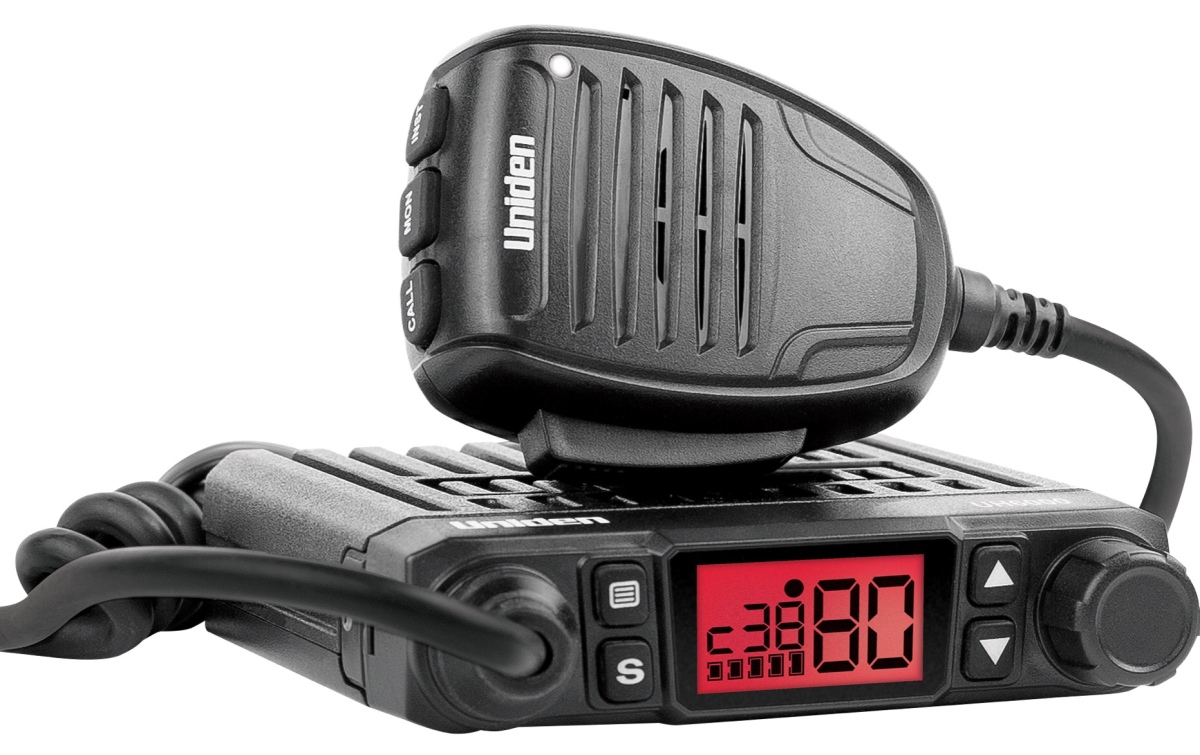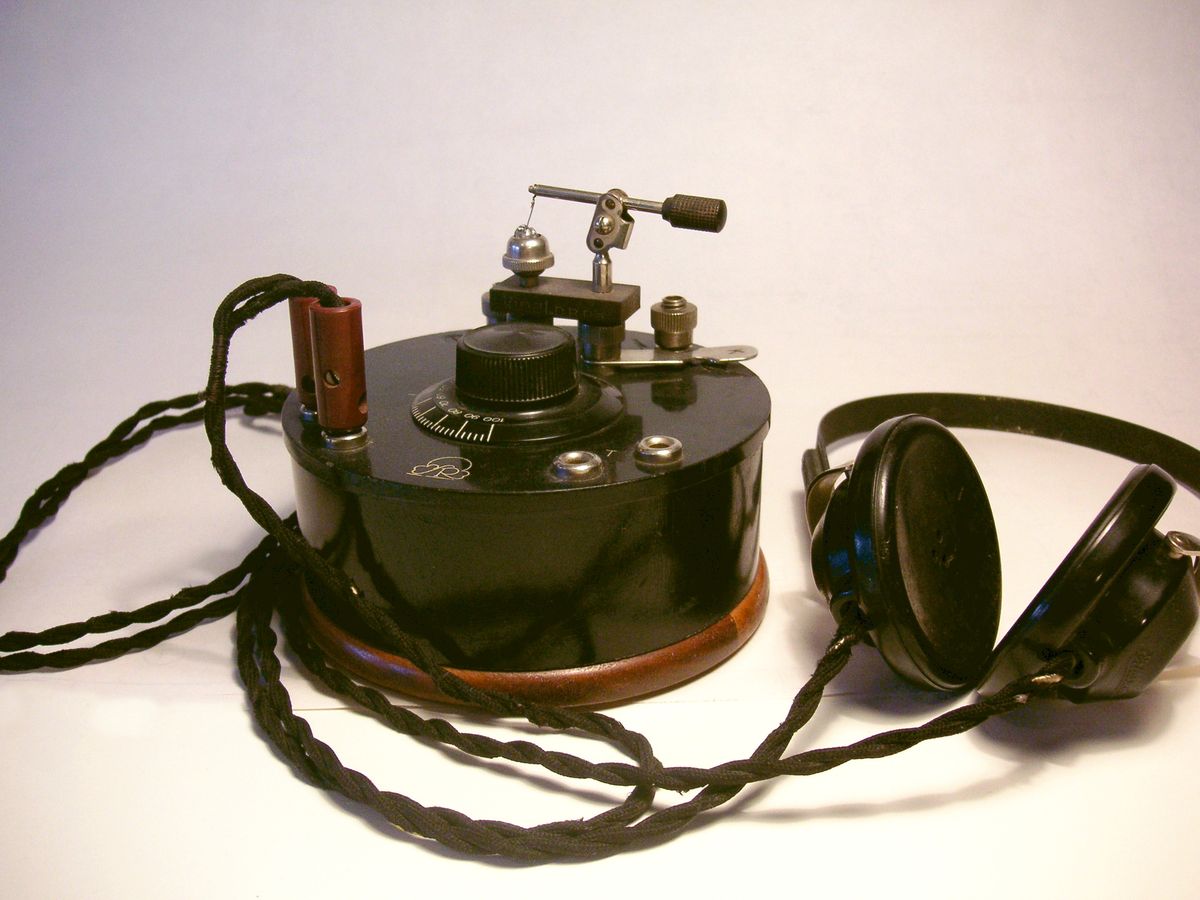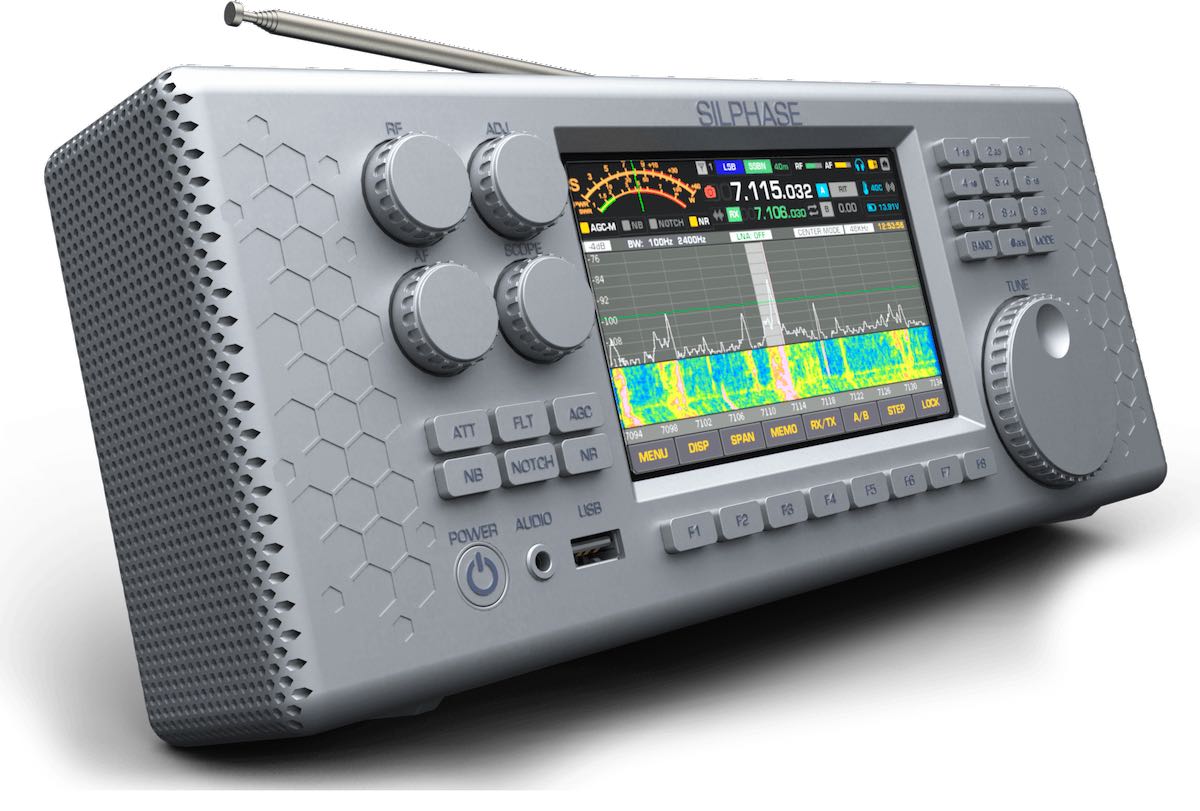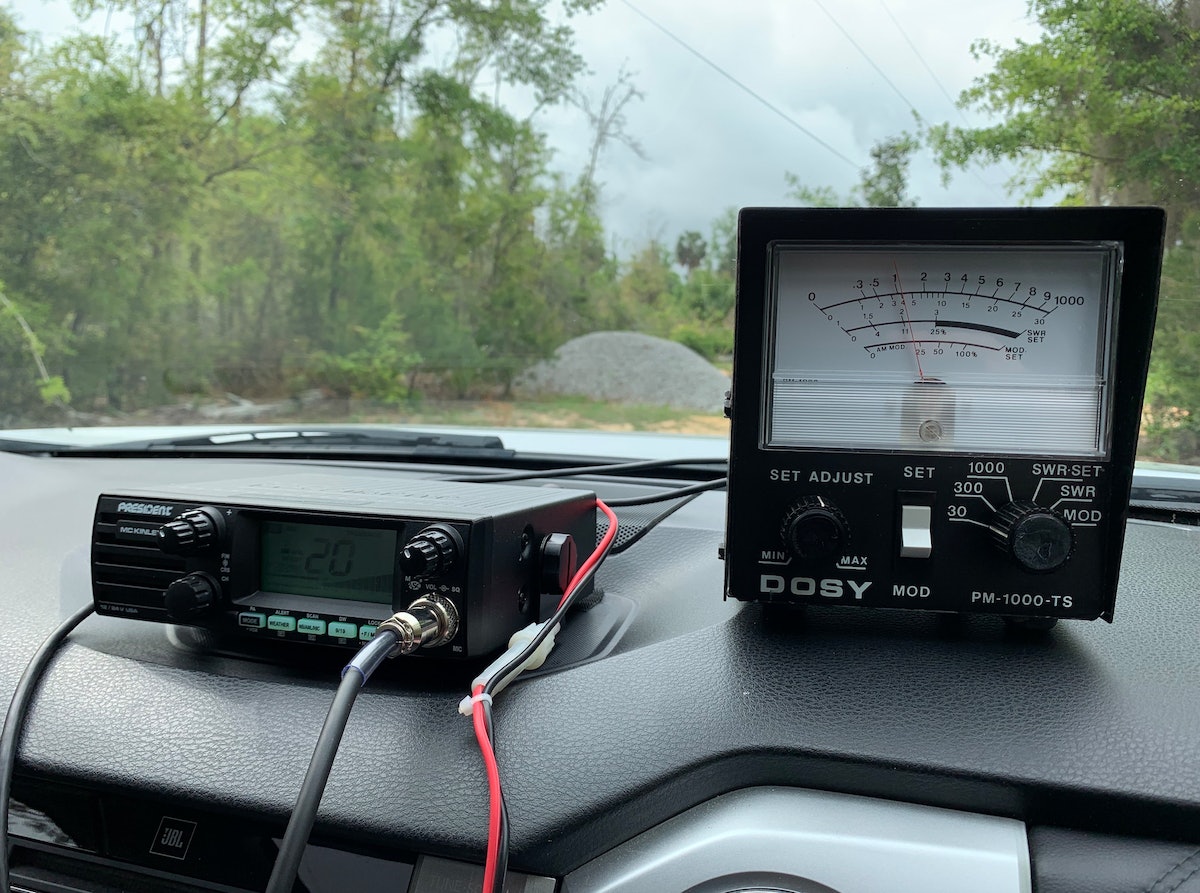Home>Devices & Equipment>Radio>What Is Wi-Fi Radio
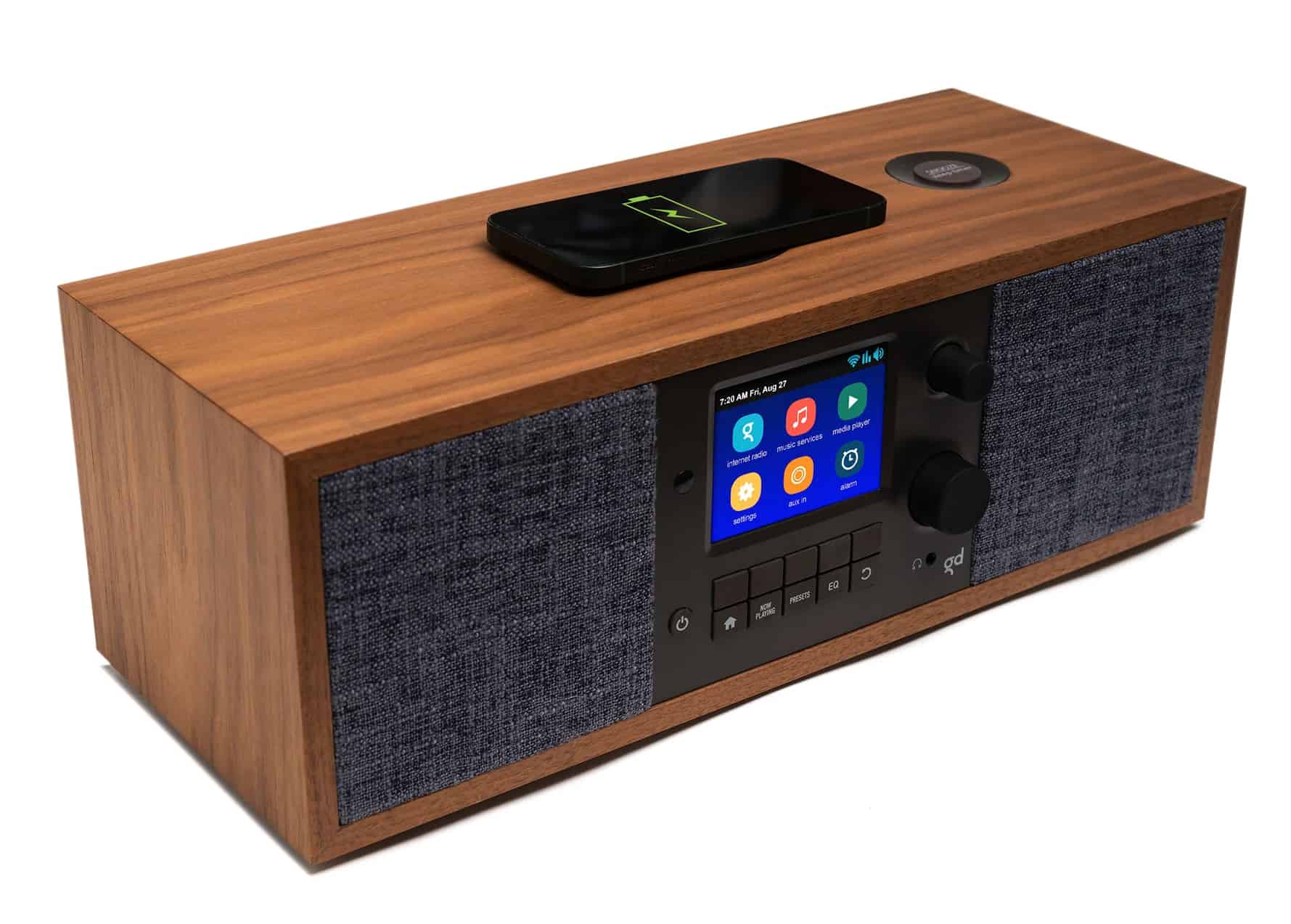

Radio
What Is Wi-Fi Radio
Modified: January 22, 2024
Discover the world of Wi-Fi radio and how it revolutionizes the way we listen to our favorite stations and podcasts. Experience the convenience and versatility of radio in the digital age.
(Many of the links in this article redirect to a specific reviewed product. Your purchase of these products through affiliate links helps to generate commission for AudioLover.com, at no extra cost. Learn more)
Table of Contents
Introduction
Welcome to the world of Wi-Fi radio, where the power of the internet meets the classic medium of radio broadcasting. In today’s digital age, technology has revolutionized the way we consume media, and radio is no exception. Gone are the days of tuning in to AM or FM frequencies to listen to our favorite stations. With the advent of Wi-Fi radio, we now have access to thousands of stations from around the world, all at our fingertips.
But what exactly is Wi-Fi radio? And how does it work? In this article, we’ll explore the ins and outs of this innovative technology, its advantages and disadvantages, popular Wi-Fi radio devices, and how it compares to traditional AM/FM radio. So strap in, tune in, and get ready to dive into the world of Wi-Fi radio.
At its core, Wi-Fi radio is essentially a device or an application that allows you to stream radio stations over the internet using your Wi-Fi connection. You can think of it as combining the convenience of streaming services like Spotify or Apple Music with the timeless appeal of radio broadcasting. Whether it’s local stations, international channels, or niche genres, Wi-Fi radio gives you access to a vast array of content from all corners of the globe.
So, how does Wi-Fi radio actually work? It’s quite simple, really. First, you need a Wi-Fi radio device, which can be a standalone radio receiver or a smartphone or tablet with a radio app. The device connects to your home Wi-Fi network, allowing it to access the internet. Once connected, you can browse through a directory of available stations and select the ones that interest you.
When you choose a station, the Wi-Fi radio device sends a request to the server hosting the station’s stream. The server then sends the audio data back to your device in real time, which gets decoded and played through the device’s speakers. This seamless process ensures a smooth listening experience, without the need for clunky antennas or manual tuning.
Now that we have a basic understanding of what Wi-Fi radio is and how it works, let’s dive deeper into its advantages and disadvantages. Stay tuned!
What is Wi-Fi Radio?
Wi-Fi radio, also known as internet radio or online radio, is a digital audio service that allows users to stream radio stations from around the world using a Wi-Fi connection. Unlike traditional AM/FM radio, which relies on broadcasting signals through electromagnetic waves, Wi-Fi radio utilizes the power of the internet to deliver audio content directly to your device.
With Wi-Fi radio, you have access to a vast selection of radio stations from various countries and genres. Whether you’re into rock, jazz, pop, talk shows, or sports commentary, you can find a station that caters to your interests. The beauty of Wi-Fi radio lies in its ability to offer a diverse range of programming, allowing listeners to explore new stations and discover content they may not have access to through traditional radio.
One of the key features of Wi-Fi radio is its convenience. You can tune in to your favorite stations without the need for traditional radio hardware or antennas. All you need is a compatible Wi-Fi radio device, such as a dedicated radio receiver or a smartphone/tablet with a radio app, and a stable internet connection. This means you can enjoy quality radio programming anytime, anywhere, as long as you have Wi-Fi access.
Another advantage of Wi-Fi radio is the customization it offers. Most Wi-Fi radio devices and apps allow you to create personalized lists of favorite stations, making it easy to access your preferred content with just a few taps or clicks. Additionally, some platforms provide recommendations based on your listening history, helping you discover new stations that align with your tastes.
Wi-Fi radio also opens doors to international broadcasting. With traditional radio, your options are typically limited to local stations or those within your country’s broadcasting range. However, with Wi-Fi radio, you can explore stations from all over the world. This offers a unique opportunity to immerse yourself in different cultures, languages, and musical styles, broadening your horizons and providing a global perspective on radio programming.
Not only does Wi-Fi radio provide a vast selection of stations, but it also offers enhanced audio quality. Unlike AM/FM radio, which can be affected by static interference and limited frequency ranges, Wi-Fi radio streams audio over the internet, delivering a more consistent and superior listening experience. Many stations even offer higher bit rates for their streams, resulting in clearer and richer sound.
In summary, Wi-Fi radio is a digital audio service that allows users to stream radio stations from around the world using a Wi-Fi connection. It offers convenience, customization, a wide range of programming choices, and superior audio quality. Whether you’re a music enthusiast, a sports fan, or someone seeking cultural diversity, Wi-Fi radio opens a world of possibilities for your listening pleasure.
How Does Wi-Fi Radio Work?
Wi-Fi radio operates by utilizing internet connectivity to stream radio stations in real time. Unlike traditional AM/FM radio, which relies on broadcasting signals through radio waves, Wi-Fi radio relies on a stable Wi-Fi connection to access and play audio content.
The first step in accessing Wi-Fi radio is having a compatible device. This can be a standalone Wi-Fi radio receiver or a smartphone, tablet, or computer with a Wi-Fi radio app or website. These devices are equipped with the necessary hardware and software to connect to the internet and stream radio stations.
Once you have a compatible device, you need to connect it to a Wi-Fi network. This can be your home network, workplace network, or any public Wi-Fi hotspot. By connecting to the internet via Wi-Fi, your device gains access to a vast library of radio stations from around the world.
After connecting to a Wi-Fi network, you can open your Wi-Fi radio app or website. Typically, these platforms provide a directory or search function that allows you to browse and select radio stations based on location, genre, language, or specific keywords.
When you select a station, your device sends a request to the server hosting the station’s stream. The server then responds by sending the audio data back to your device. This audio data is received in real time and gets decoded by your device’s software before being played through its speakers or connected headphones.
Unlike traditional radio, which transmits audio through electromagnetic waves, Wi-Fi radio streams audio data over the internet. This means that a stable and reliable internet connection is crucial for a seamless listening experience. A slow or unstable Wi-Fi connection can result in buffering, interruptions, or degraded audio quality.
Once you’re tuned in to a Wi-Fi radio station, you can typically control playback with the app or device’s interface. This may include features like play/pause, volume control, station selection, and the ability to add stations to a favorites list.
It’s worth noting that Wi-Fi radio is not limited to just audio content. Many stations also provide additional features, such as visual content, artist information, song lyrics, album artwork, and even on-demand podcasts or recorded shows.
In summary, Wi-Fi radio works by utilizing an internet connection to stream radio stations in real time. It requires a compatible device, a Wi-Fi network, and a stable internet connection. By connecting to the internet, you gain access to a vast library of radio stations from around the world, which you can browse and select through a Wi-Fi radio app or website. Once a station is chosen, the audio data is streamed to your device and played through its speakers or headphones, providing a seamless and customizable listening experience.
Advantages of Wi-Fi Radio
Wi-Fi radio offers several advantages over traditional AM/FM radio. Let’s explore some of the key benefits that make Wi-Fi radio an appealing choice for radio enthusiasts:
- Access to a wide range of stations: With Wi-Fi radio, you have access to thousands of stations from around the world. Whether you enjoy local programming, niche genres, or international channels, Wi-Fi radio opens up a world of options for your listening pleasure.
- Customization and personalization: Most Wi-Fi radio devices and apps allow you to create personalized lists of favorite stations and genres. This makes it easy to quickly access your preferred content without the need to manually tune frequencies or search through stations.
- Superior audio quality: Unlike traditional radio, which can be prone to static interference and limited frequency ranges, Wi-Fi radio streams audio over the internet. This often results in clearer and richer sound quality, especially when stations offer higher bit rates for their streams.
- International broadcasting: Wi-Fi radio provides a unique opportunity to explore stations from different countries, allowing you to immerse yourself in a variety of cultures, languages, and musical styles. This global perspective adds a level of diversity and richness to your radio listening experience.
- Convenience and portability: Wi-Fi radio eliminates the need for traditional radio hardware or antennas. You can listen to your favorite stations on a dedicated Wi-Fi radio receiver or by using your smartphone, tablet, or computer with a Wi-Fi radio app or website. This means you can enjoy radio programming anytime, anywhere, as long as you have a stable internet connection.
- Content recommendations and discovery: Many Wi-Fi radio platforms provide recommendations based on your listening history, helping you discover new stations and genres that align with your interests. This facilitates exploration and keeps your radio experience fresh and exciting.
- Additional features and content: Wi-Fi radio stations often go beyond just audio content. Many platforms provide additional features like artist information, song lyrics, album artwork, and on-demand podcasts or recorded shows. This adds value and enhances the overall listening experience.
All in all, Wi-Fi radio offers a wide range of advantages, including access to diverse programming, customization options, superior audio quality, international broadcasting, convenience, content recommendations, and additional features. With Wi-Fi radio, you can enjoy a personalized and immersive radio experience like never before.
Disadvantages of Wi-Fi Radio
While Wi-Fi radio brings many advantages, it’s important to consider some of the potential disadvantages that come with this technology:
- Reliance on internet connectivity: Wi-Fi radio requires a stable and reliable internet connection. If your internet connection is slow, unstable, or disrupted, it can result in buffering, interruptions, or degraded audio quality, which can be frustrating when trying to enjoy your favorite stations.
- Data usage: Streaming radio stations over Wi-Fi consumes data, especially if you listen for extended periods or at higher streaming bit rates. This can potentially have an impact on your internet data plan, particularly if you have limited monthly data allowances.
- Dependence on battery life: If you’re using a Wi-Fi radio app on your smartphone or tablet, extended listening sessions can drain your device’s battery. Depending on your device’s battery life and usage patterns, you may need to keep it plugged in or have a backup power source while listening to Wi-Fi radio for extended periods.
- Device compatibility: Not all devices may be compatible with certain Wi-Fi radio apps or services. Some apps may require specific operating systems or hardware capabilities, limiting the availability of Wi-Fi radio on older devices or certain platforms.
- Content availability: Although Wi-Fi radio provides access to a vast array of stations, there may still be limitations in terms of licensing agreements or regional restrictions. Certain stations or content may not be available in your location, restricting your ability to access specific programming.
- Discovery challenges: While Wi-Fi radio offers customization and recommendations, it can still be challenging to discover new stations and genres. With the abundance of available options, it may take some time and effort to find stations that align with your preferences beyond well-known or popular ones.
- Loss of local connection: Unlike traditional AM/FM radio, which is often rooted in local communities, Wi-Fi radio can sometimes create a sense of disconnect from local programming and engagement. This may result in the loss of a sense of community or connection to local news, events, and culture.
Despite these potential downsides, it’s important to mention that the disadvantages of Wi-Fi radio can vary depending on individual circumstances and preferences. Many of these challenges have workarounds or alternative solutions, and for many listeners, the benefits of Wi-Fi radio far outweigh the drawbacks.
Ultimately, it’s up to each individual to weigh the advantages and disadvantages of Wi-Fi radio and determine if it aligns with their needs and listening preferences.
Popular Wi-Fi Radio Devices
As the popularity of Wi-Fi radio continues to grow, several devices have emerged as popular choices among radio enthusiasts. These devices offer a wide range of features and functionalities to enhance the Wi-Fi radio listening experience. Let’s explore some of the most popular Wi-Fi radio devices on the market:
- Sonos One: The Sonos One is a compact wireless speaker that supports Wi-Fi streaming and is equipped with voice control capabilities. With built-in Amazon Alexa or Google Assistant, you can easily control your Wi-Fi radio and other audio content using voice commands.
- Grace Digital Mondo Elite: The Grace Digital Mondo Elite is a versatile Wi-Fi radio that features a large color display, easy-to-use interface, and access to thousands of internet radio stations. It also supports streaming services like Spotify and Pandora, allowing you to enjoy a variety of audio content.
- Roberts Stream 94i: The Roberts Stream 94i is a stylish and feature-rich Wi-Fi radio that includes FM and DAB/DAB+ reception in addition to internet radio capabilities. It offers a clear color display, Bluetooth connectivity, and access to podcasts and streaming services for a comprehensive radio experience.
- Oria Portable Internet Radio: The Oria Portable Internet Radio is a compact and portable device that lets you take your Wi-Fi radio experience on the go. It supports Wi-Fi streaming, features a built-in speaker and headphone jack, and offers a variety of presets for quick access to your favorite stations.
- Revo SuperSignal: The Revo SuperSignal is a premium Wi-Fi radio with a distinctive design and superior sound quality. It features DAB/DAB+ and FM reception, Bluetooth connectivity, and a large graphical OLED display for easy navigation and station selection.
- Pure Evoke F3: The Pure Evoke F3 is a versatile Wi-Fi radio that combines internet radio, DAB/DAB+, and FM reception in one compact device. It offers a color display, intuitive controls, and support for streaming services like Spotify and Deezer.
These are just a few examples of popular Wi-Fi radio devices available in the market. Each device offers its own unique set of features, audio quality, and user interface, allowing you to choose a device that suits your preferences and budget.
It’s worth noting that many smartphones, tablets, and smart speakers also support Wi-Fi radio apps or built-in capabilities. This means you may not necessarily need a dedicated Wi-Fi radio device to enjoy the benefits of streaming radio over Wi-Fi.
Ultimately, the choice of Wi-Fi radio device depends on your specific needs, desired features, and budget. It’s recommended to do some research and read reviews to find the device that meets your requirements and provides an optimal Wi-Fi radio listening experience.
Wi-Fi Radio vs Traditional AM/FM Radio
Wi-Fi radio and traditional AM/FM radio are two different mediums for accessing audio content, each with its own set of advantages and disadvantages. Let’s compare Wi-Fi radio and traditional AM/FM radio to understand the key differences between them:
Availability and Variety: AM/FM radio is widely available and accessible, with countless stations broadcasting over the airwaves. However, the range of available stations is limited by geographical location and signal strength. In contrast, Wi-Fi radio offers access to thousands of stations from around the world, providing a much broader range of genres, languages, and cultural perspectives.
Signal Quality: AM/FM radio signals can be affected by factors like distance from the transmitter, interference from other electronic devices, and environmental conditions. This can result in issues like weak signals, static, and signal loss. Wi-Fi radio, on the other hand, streams audio over the internet, delivering a more consistent and often higher-quality sound.
Customization and Convenience: Traditional radio relies on manual tuning, where listeners have to adjust the dial and antenna to find desired stations. Wi-Fi radio provides a more convenient experience, allowing users to browse and select stations from a digital directory, create personalized presets, and even receive recommendations based on their listening history.
Geographical Boundaries: Traditional radio is often limited by geographical boundaries, as stations typically broadcast within a specific range. This means that when you travel outside the coverage area, you may lose access to your favorite local stations. Wi-Fi radio overcomes this limitation by streaming content over the internet, allowing listeners to access their preferred stations from anywhere in the world, as long as there is a stable internet connection.
Content Extras: AM/FM radio primarily focuses on audio content, with limited additional features. Wi-Fi radio, on the other hand, often provides additional information and extras such as artist and song information, album artwork, lyrics, and on-demand playback of recorded shows or podcasts, enhancing the overall listening experience.
Internet Dependency: Wi-Fi radio requires a stable internet connection to access stations, meaning that a loss of internet connection or slow connection speeds can hinder the listening experience. Traditional AM/FM radio, however, does not rely on internet connectivity and can be enjoyed even in areas with limited or no internet access.
Overall, both Wi-Fi radio and traditional AM/FM radio have their own strengths and limitations. If you seek a diverse range of stations from around the world and enjoy the convenience of customization, Wi-Fi radio is an excellent choice. However, if you prefer local programming and enjoy a reliable signal without an internet connection, traditional AM/FM radio may be more suitable for you.
Wi-Fi Radio Streaming Services
In addition to accessing radio stations directly through Wi-Fi radio devices or apps, there are dedicated streaming services that offer a wide selection of stations for listeners to enjoy. These Wi-Fi radio streaming services provide a convenient way to explore and discover new stations, genres, and content. Let’s take a look at some popular Wi-Fi radio streaming services:
- TuneIn: TuneIn is one of the most popular Wi-Fi radio streaming services, offering over 100,000 radio stations from around the world. It covers a wide range of genres, including music, sports, news, and talk shows. With a robust search function, personalized recommendations, and the ability to follow favorite stations, TuneIn provides a comprehensive radio listening experience.
- iHeartRadio: iHeartRadio is a widely-used Wi-Fi radio streaming service that brings together thousands of radio stations, podcasts, and curated playlists. It offers a vast library of music genres, live sports coverage, and top-rated podcasts. With features like personalized recommendations based on listening habits and the ability to create custom stations, iHeartRadio caters to a variety of interests.
- RadioTunes: RadioTunes focuses on delivering high-quality audio streams of curated music channels. It offers a diverse range of genres, from jazz and classical to pop and rock, ensuring that listeners can find their preferred music styles. With ad-free listening and customizable playlists, RadioTunes provides a premium Wi-Fi radio experience for music enthusiasts.
- Radio Garden: Radio Garden is a unique Wi-Fi radio streaming service that allows users to explore the world by tuning into various live radio stations across different countries. It provides an interactive globe interface that lets you navigate to different regions, discovering stations and immersing yourself in cultural broadcasts from around the globe.
- myTuner Radio: myTuner Radio is a comprehensive Wi-Fi radio streaming service that brings together thousands of radio stations from multiple countries. It offers a variety of genres, including music, sports, and news. With simple navigation, customizable favorites lists, and the option to browse stations by country or genre, myTuner Radio makes it easy to find and enjoy your favorite stations.
These are just a few examples of Wi-Fi radio streaming services available to users. Each service offers its own unique features, content offerings, and user interfaces. It’s worth exploring multiple platforms to find the one that best aligns with your listening preferences and offers the stations and genres you enjoy the most.
Whether you prefer music, talk shows, sports coverage, or cultural broadcasts, Wi-Fi radio streaming services provide an excellent way to access a wide range of stations and content from around the world, all from the convenience of your Wi-Fi-enabled device.
Conclusion
Wi-Fi radio has revolutionized the radio listening experience, providing access to a vast array of stations from around the world, personalized customization options, and enhanced audio quality. In this article, we explored what Wi-Fi radio is and how it works, delving into its advantages and disadvantages, popular devices, and its comparison with traditional AM/FM radio.
Wi-Fi radio offers numerous benefits, such as the convenience of accessing a wide range of stations without the need for traditional radio hardware or antennas. It provides customization features, allowing listeners to create personalized station lists and discover new content based on their preferences.
With Wi-Fi radio, you can transcend geographical boundaries and explore stations from different countries, immersing yourself in diverse cultures, languages, and musical styles. The superior audio quality and additional features further enhance the overall listening experience, providing a seamless and engaging radio encounter.
However, it’s important to consider the potential challenges of Wi-Fi radio, such as reliance on internet connectivity, data usage, and device compatibility. Traditional AM/FM radio still holds advantages like local connection and reliable signal reception, especially in areas with limited or no internet access.
In conclusion, Wi-Fi radio offers a modern and convenient approach to radio broadcasting. Its accessibility, customization, and global reach have transformed the way we enjoy radio programming. Whether you’re a music enthusiast, a news junkie, or someone interested in exploring diverse content, Wi-Fi radio provides an immersive and personalized radio experience like never before.
So, tune in, explore the endless possibilities, and let Wi-Fi radio transport you to a world of audio content at the touch of a button.




